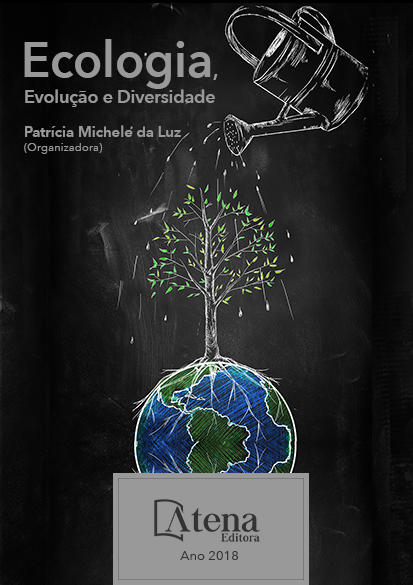
MACROFAUNA EDÁFICA E FUNCIONAMENTO ECOSSISTÊMICO ÀS MARGENS DO RESERVATÓRIO DE UMA HIDRELÉTRICA
O pulso de inundação é a principal força que modula a biodiversidade, a produtividade e os processos ecossistêmicos em ambientes ripários. Ao redor do mundo, essas áreas são impactadas principalmente por hidrelétricas, cujas águas dos reservatórios eliminam a vegetação, alteram condições e recursos locais e podem afetar os processos ecossistêmicos. O objetivo desse trabalho foi avaliar o funcionamento ecossistêmico em uma área sob influência do reservatório de uma hidrelétrica. Para isso testamos a hipótese de que a biodiversidade da macrofauna edáfica é maior nas áreas com maiores taxas de deposição da serapilheira. O trabalho foi realizado em um fragmento de mata às margens do rio Grande, sob influência da Usina de Marimbondo, em Frutal-MG. Foram estabelecidos 6 transectos de 100x20m, cada um deles subdividido em 5 parcelas de 20x20m, de forma que as primeiras parcelas estavam localizadas na borda do fragmento e as últimas no seu interior. Em cada parcela foram coletadas amostras de 25x25x10cm da serrapilheira no período seco e no período chuvoso. A abundância e a riqueza da macrofauna edáfica na serrapilheira não diferiram entre as coletas (abundância: Fchuvoso(2, 28)=1,1879; p=0,2851 e Fseco(2, 28)=0,001 e p=0,9694; riqueza: Fchuvoso(2, 28)=0,4807 e p=0,4938 / Fseco(2, 28)=0,2619 e p=0,6128).A quantidade de serapilheira produzida aumentou proporcionalmente com a distância do reservatório, não apresentando relação com a macrofauna. Os resultados indicam prejuízos na biodiversidade da macrofauna devido ao alagamento. Também mostram que o ambiente estudado não pode ser caracterizado ripário nem como de terra firme, estando pois entre esses dois extremos.
MACROFAUNA EDÁFICA E FUNCIONAMENTO ECOSSISTÊMICO ÀS MARGENS DO RESERVATÓRIO DE UMA HIDRELÉTRICA
-
DOI: Atena
-
Palavras-chave: Ambiente Ripário, Serapilheira, Pulso de inundação; Hidroelétrica.
-
Keywords: Riparian environment, Litter, flood pulse, Hydroelectric.
-
Abstract:
The flood pulse is the main force that modulates biodiversity, productivity and ecosystem processes in riparian environments. Around the world, these areas are impacted mainly by hydroelectric dams, whose reservoir waters eliminate vegetation, alter local conditions and resources, and can affect ecosystem processes. The objective of this work was to evaluate the ecosystem functioning in an area under the influence of the reservoir of a hydroelectric plant. For this, we test the hypothesis that the biodiversity of the edaphic macrofauna is higher in the areas with higher deposition rates of the litter. The work was carried out in a forest fragment on the banks of the Grande River, under the influence of the Marimbondo Mill, in Frutal-MG. We set six transects of 100x20m, each subdivided into five plots of 20x20m so that the first plots were on the edge of the fragment and the last plots inside. We collected 25x25x10cm samples from the litter in each plot, in the dry season and the rainy season. The abundance and richness of the edaphic macrofauna in the litter did not differ among the collections (abundance: Frainy (2.28) = 1.1879; p = 0.2851 and Fdry (2.28) = 0.001 and p = 0.9694; : Frainy (2.28) = 0.4807 and p = 0.4938 / Fdry (2.28) = 0.2619 and p = 0.6128). The amount of litter produced increased proportionally with the distance of the reservoir, showing no relation to the macrofauna. The results indicate macrofauna biodiversity damage due to flooding. They also show that the studied environment cannot be characterised as riparian nor as dry land, being therefore between these two extremes.
-
Número de páginas: 15
- Raphael Marinho Siqueira


